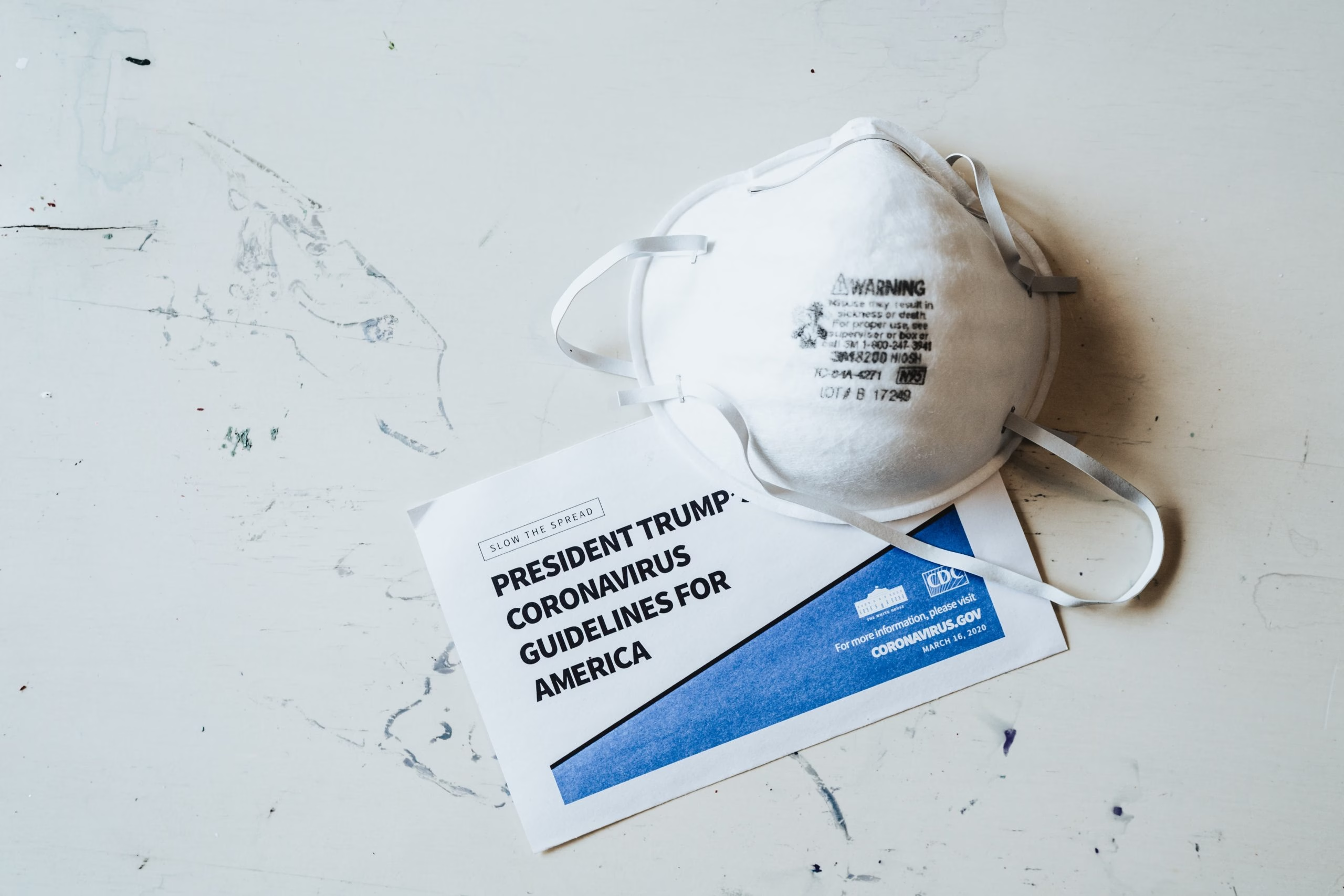How many cases? Where are they? Who is at risk? Here are the answers to questions about how the new strain of coronavirus is playing out in Texas.
by Megan Menchaca and Allyson Ortegon
Gov. Greg Abbott has declared a statewide public health disaster as the new coronavirus continues spreading through Texas communities and the number of cases is expected to increase exponentially.
Following the lead of national leaders to extend the period of social distancing, Abbott issued an executive order March 31 that tells Texans to stay home in April except for essential activity. His previous statewide order closing bars, gyms, schools and restaurant dining rooms across the state is still in place as well. Abbott and local officials have taken several steps to buttress the medical response needed to handle the growing number of Texas cases, including calling in the National Guard to help with various health care needs. Meanwhile, the state economy and budget have taken dramatic hits as businesses close and people stay home to stop the virus’ spread.
The Texas Tribune has received hundreds of reader questions about COVID-19. We’re answering what we can below. Send us your questions here.
The latest coronavirus updates
What does the pandemic mean for me?
- What is the state’s testing capacity, and how do I know if I should get screened?
- When do schools open back up?
- What is an essential business?
- Can I still go to church?
- What things can parents do to help protect their children?
What does this mean for my community?
- How is the new coronavirus impacting Texas’ health care systems?
- How will the state’s economy be affected?
- How is the coronavirus impacting court hearings and prisons?
What is the government doing?
- What is the government doing to help those financially impacted?
- What is Texas doing to help address unemployment claims?
What is the Coronavirus?
- What’s the fatality rate for coronavirus?
- How does the coronavirus spread?
- How long does the virus live on surfaces?
- Who is most at risk?
- What do social distancing, community spread and pandemic really mean?
How many people in Texas have coronavirus?
Daily data on the number of cases in Texas is reported by the Department of State Health Services. On March 24, the agency said it changed its reporting system to track case counts directly from counties instead of relying on official case forms, which come in later and were causing the state’s official count to lag hundreds behind other tallies.
How do I get or give help?
There are a variety of resources for people who need help — or want to help. We’ve compiled a list here.
What is the state’s testing capacity, and how do I know if I should get screened?
Texas’ testing has lagged behind the rates at which people in other states are being screened for the new coronavirus, but the state is increasing its testing capacity. Many who have gotten tests are waiting days on end, and sometimes a week or more, for the results, according to interviews with patients and health care professionals.
We’ve compiled a guide to how testing in Texas works, whether people qualify, how much it costs, what typical symptoms look like and everything we know about how the virus spreads. You can visit our guide here.
When and why are Texans allowed to leave their homes?
At a press conference March 31, Abbott told Texans to stay at home for the next month unless they are taking part in essential services and activities, but declined to call his latest executive order a shelter-in-place or stay-at-home order.
When it comes to enforcing the statewide and various local orders, residents could face fines and jail time if they don’t comply, depending on which orders they defy. And businesses could face the loss of their licenses. So far, law enforcement officers across the state are focusing on education and issuing warnings rather than making arrests.
When do schools open back up?
At his March 31 press conference, Abbott said schools would be closed at least through May 4.
What is an “essential” business?
Texas has identified essential businesses as those entities that are critical to maintaining infrastructure viability — like grocery stores, hospitals and day cares. But that doesn’t mean the guidelines are being consistently followed across the state.
Can I still go to church?
Some churches have switched over to offering their congregation’s livestreaming. But technically, yes. Abbott said in his March 31 executive order that churches can remain open as long as services follow the Centers for Disease Control and Prevention’s guidelines, such as keeping attendees at least six feet apart.
What things can parents do to help protect our children?
The CDC recommends children take the same preventive measures as adults: washing hands, avoiding contact with those who are sick and staying up to date on vaccinations. They note there is no evidence children are more susceptible to the virus than adults, and in China, the majority of cases — and the majority of severe symptoms — occur in adults.
How is the new coronavirus impacting Texas’ health care systems?
Hospitals are restricting who may visit and screening outsiders for fever. Some are asking doctors and nurses to work longer hours. Others are building drive-thru testing sites, temporary triage centers and fever clinics in anticipation of high patient volumes. And all of them are urging Texans to stay as isolated as possible to slow the spread of the new coronavirus because there aren’t enough hospital beds to care for critical patients if too many people get sick at once.
Many nurses and doctors on the front lines of fighting the coronavirus pandemic don’t qualify for the expanded paid sick leave protections that Congress granted to health care workers in March.A national shortage of personal protective equipment spurs fear among Texas health care workers that they may have to battle the worst of the new coronavirus outbreak without the masks, gowns and gloves needed to keep them safe.
Some small, rural Texas hospitals say they have so little protective gear that it could be exhausted in hours by even a few COVID-19 patients. Even bigger hospitals, which say their supplies are sufficient for now, don’t know how they will be able to replenish stocks as patient counts grow. Meanwhile, several businesses from fabric shops to factories are racing to make and manufacture personal protective equipment in Texas before supplies run out.
How will the state’s economy be affected?
Exact figures of the economic hit the state and its residents will take aren’t yet known. The answer largely depends on how long the pandemic lasts. But the information that is available so far suggests the economic impact will be bad, both for the state economy as a whole and for Texans whose jobs have been affected.
Large industries that help power the Texas economy — like the oil and gas sector and airline carriers — are facing dramatic revenue drops and experts fear COVID-19 will hurt trade in the state.
How is the coronavirus impacting court hearings and prisons?
Some Texans are stuck in jail because many court proceedings have been paused, including jury trials and plea deal hearings. Some local officials have moved to release low-level defendants accused of nonviolent crimes from jails, which are especially vulnerable to the spread of COVID-19.
Abbott signed an order March 29 that prohibits inmates accused or previously convicted of violent crimes from being released from jails if they can’t pay bail. Inmates who can pay bail can walk free, a distinction that prompted civil rights attorneys to challenge the order April 1 for unconstitutionally discriminating against poor defendants. In a separate lawsuit, two older Texas inmates say the Texas Department of Criminal Justice is failing to protect prisoners at a geriatric prison near College Station.
What is the government doing to help those financially impacted?
Small businesses battered by the novel coronavirus pandemic sweeping through Texas can apply for long-term, low-interest loans from the U.S. Small Business Administration. The Coronavirus Aid, Relief and Economic Security Act includes nearly $350 billion in loans to small businesses, meaning companies with fewer than 500 people.
Congress’ CARES Act will cost more than $2 trillion and aims to support the medical response to the pandemic, keep businesses afloat long enough to avoid more layoffs and give money to Americans making less than a certain income. The legislation also expands unemployment insurance and suspended payments of federally backed student loans .
The Texas Public Utility Commission has banned utilities from cutting off power and water services to Texans who have lost jobs and income during the COVID-19 crisis at least through mid-September. Several local governments have also issued various orders that prohibit cutting off certain utilities. Check with your local government agency to see what orders have been put in place.
To help renters, especially those who have been laid off or whose hours have been cut, the Texas Supreme Court issued an order halting eviction proceedings statewide until after April 30. At the end of the period, the chief justice can choose to renew the order. Several cities and counties have also issued eviction moratoriums that may extend past the statewide order. Check with your city or county officials for details.
What is Texas doing to help address unemployment claims?
The number of Texans applying for unemployment relief increased by more than 1600% over two weeks in March, which overwhelmed the Texas Workforce Commission’s phone lines and website and caused delays for thousands of Texas.
In response, the commission hired 700 new employees, extended operating hours and increased server capacity. Texas has also relaxed requirements for state unemployment benefits by removing the work search requirement and declining to reduce future benefits for people who have been overpaid. While the unemployment benefits don’t apply to all Texans, including people who are self-employed or work on a contract basis, many of them can seek relief through the federal coronavirus aid bill.
What’s the fatality rate for coronavirus?
“Globally, about 3.4% of reported COVID-19 cases have died. By comparison, seasonal flu generally kills far fewer than 1% of those infected,” WHO Director-General Tedros Adhanom Ghebreyesus said March 3. The seasonal flu has a mortality rate of about 0.1%.
According to a paper published by the Journal of the American Medical Association, the fatality rates for the elderly or people with other underlying health conditions can be much higher — as high as 14% for people over the age of 80.
It is important to note that it is very early and data is still being gathered, so the fatality rate for COVID-19 could change, according to PBS NewsHour.
How does the coronavirus spread?
The virus spreads primarily through droplets from an infected person who coughs or sneezes, according to the World Health Organization. It may be spread by people who are asymptomatic or through surfaces with the virus on it, but this is not believed to be the main mode of transmission, according to the CDC.
To prevent the spread, the CDC recommends regularly washing your hands, avoiding contact with people who are sick and practicing social distancing.
How long does the virus live on surfaces?
Studies suggest it may last for a few hours or up to several days, depending on the type of surface and the temperature and humidity of the room, according to the World Health Organization. Tests by the U.S. government and scientists found it can last up to two to three days on plastic and stainless steel.
How long does it take for symptoms to start showing?
The time between catching COVID-19 and showing symptoms — the incubation period — ranges from one to 14 days, most commonly five days, according to the World Health Organization. The WHO plans to update that estimate as more information is gathered.
Who is most at risk?
Research shows the people most at risk are elderly and those with serious chronic medical conditions like heart disease, diabetes or lung disease, according to the CDC.
There isn’t enough data yet to determine the risk for pregnant women, but researchers hope to gather information on risk for these women, the likelihood of sickness compared with women who aren’t pregnant and whether the virus passes from mother to baby.
For now, Sonja Rasmussen, a pediatrics and epidemiology professor with University of Florida Health advises pregnant women, like everyone else, to “avoid being exposed — stay away from sick people, wash hands frequently, avoid touching their face and disinfect contaminated surfaces.”
What do social distancing, community spread and pandemic really mean?
Social distancing is deliberately increasing the physical space between people to avoid spreading illness, according to Johns Hopkins Medicine. Staying at least 6 feet away, working from home and avoiding crowds will help stop or slow the spread of the virus and put less strain on health care resources, or “flatten the curve”.
Community spread is when someone becomes infected without having contact with another infected person or traveling to an area where the infection was documented.
According to the CDC, an epidemic is an outbreak of a disease beyond what the population in an area usually expects. A pandemic is when an epidemic spreads to multiple countries or continents. On March 11, the WHO declared COVID-19 a pandemic.
Edgar Walters contributed to this report.
</div>
</article>
<p>This article originally appeared in <a href="http://www.texastribune.org/">The Texas Tribune</a> at <a href="https://www.texastribune.org/2020/03/02/coronavirus-texas-cases-latest-updates-san-antonio/">https://www.texastribune.org/2020/03/02/coronavirus-texas-cases-latest-updates-san-antonio/</a>.</p>
<link rel="canonical" href="https://www.texastribune.org/2020/03/02/coronavirus-texas-cases-latest-updates-san-antonio/">
<p>The Texas Tribune is proud to celebrate 10 years of exceptional journalism for an exceptional state.
<a href="https://www.texastribune.org/series/10th-anniversary/?utm_campaign=trib-marketing&utm_source=media_partners&utm_medium=website&utm_term=reprint-footer">Explore the next 10 years with us.</a></p>
<script src="https://dot.texastribune.org/static/dist/dot.min.55eef7d282ec435600d1.js" integrity="sha384-kWHbWWrJHsBy04/FLYpSF8whX7iznTaWu7KCwxjA7qmPD3La29VFha61MJDfKQ+e" crossorigin="anonymous" data-tt-canonical="https://www.texastribune.org/2020/03/02/coronavirus-texas-cases-latest-updates-san-antonio/"></script>





























